DISC in the Workplace: Unlocking the Benefits of Different Strengths and Perspectives
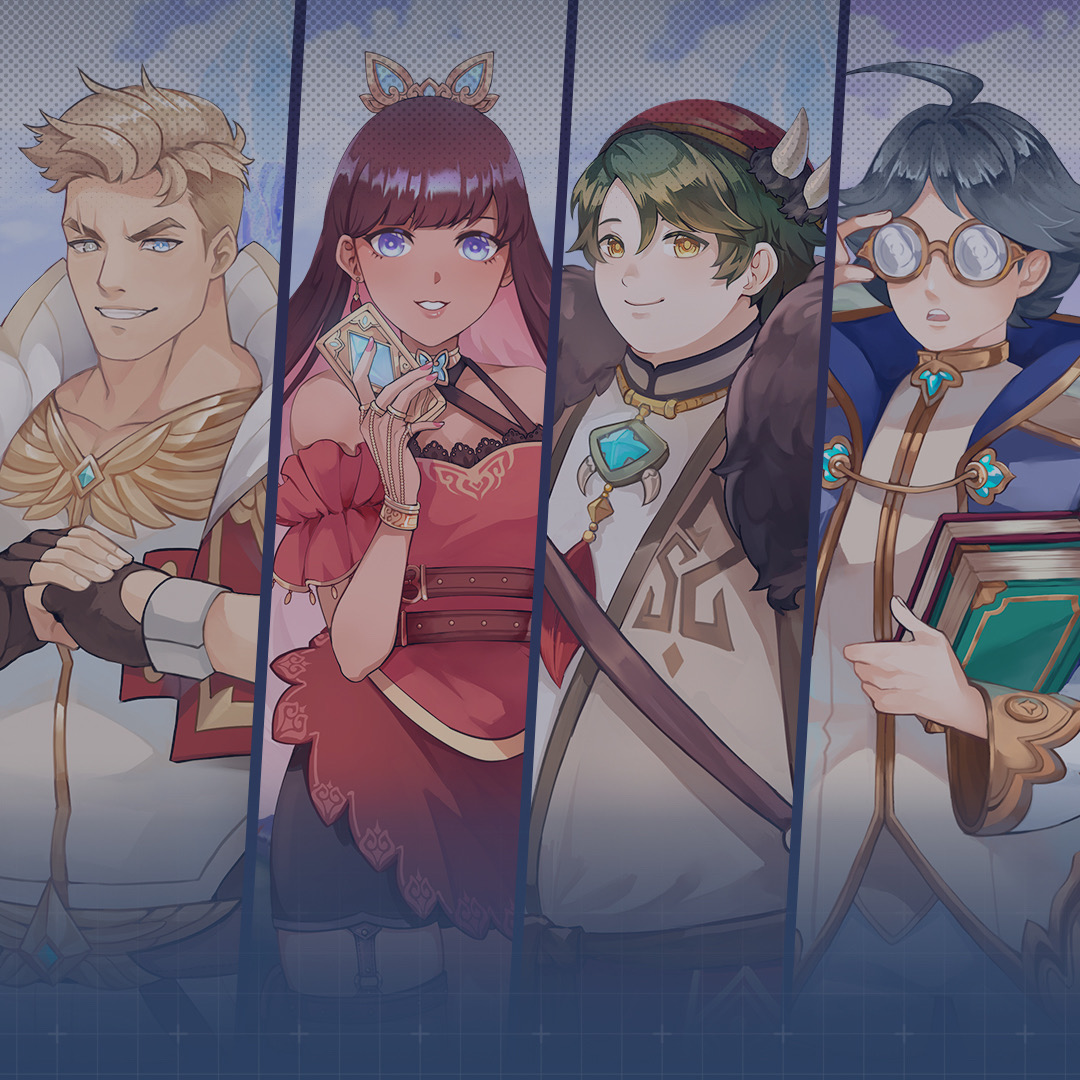
Diversity is common in the workplace, but it can sometimes lead to conflict among the crews. It’s important to understand that everyone might act or react differently in a certain situation. You might wonder if only there’s a way to develop a greater understanding of our teammates, those we work with as colleagues, and those we manage and lead. Well, the good news is: there’s a way! Personality assessment tools like DISC can do just that. DISC is a personality assessment tool Agate uses to improve communication in the workplace, guide career decisions, and empower meaningful professional connections. What is DISC? DISC stands for the four main behavioral styles described in the DISC model: Dominance, Influence, Steadiness, and Conscientiousness. Each person usually has a combination of these styles, but only one or two will be the most prominent. Dominance People with a preference for Dominance (D) tend to be confident and emphasize accomplishing results. They are motivated by winning, competing, and gaining success. Strengths People with D personality establish clear objectives and devise plans to attain them; they’re able to plan quickly and analyze resources and skills needed to finish something. With their drive to win and compete for success, they enjoy taking on challenges and finding solutions to overcome them. ChallengesPeople with a D personality type may become frustrated with those with a low level of ambition due to their strong desire to win and succeed. However, it’s important for them to keep in mind that goals cannot be accomplished without assistance and that they should learn to trust others to reach their goals. Patience and clarity when explaining things to those around them could help in that regard. Another challenge they need to overcome is their tendency to display sensitivity. An Example of D Personality from our game, Valthirian Arc: Hero School Story 2 MotivationWinning every fight PositivesBrawny, Competitive, Disciplined LikesSport, Confrontation Chad is a very competitive person who sees anyone stronger than him as a challenge. Overall, he is just a simple young man who wants something simple: to be stronger than everyone else. Maybe, he’s actually too simple to be true. Influence Those with the Influence (I) preference tend to be more open and emphasize relationships and influencing others. They tend to be enthusiastic and hopeful, making the work environment fun. If you come across someone who enjoys talking, making friends, and creating social events, they likely have a high Influence preference. StrengthsThey excel at persuading, motivating, and selling ideas to others. Additionally, they are adept at creating a pleasant environment and fostering relationships with other people. ChallengesThe I personality type may find it challenging to stay organized, requiring someone to follow them up on their responsibilities and projects. They may also have trouble concentrating for prolonged periods and should try to manage their time better and slow down their pace to listen more to other people. An Example of I Personality from our game, Valthirian Arc: Hero School Story 2 MotivationFollow any mood booster PositivesAttractive, Good fashion sense LikesColors, Ornaments, Love A carefree and happy-go-lucky young woman whose bubbly personality and beauty make her very well-liked. This suits her perfectly, as she also likes people and friends. Steadiness People with a preference for Steadiness (S) tend to be consistent, calm, and patient. They are people who emphasize cooperation and sincerity. What they do is driven by opportunities to help and sincere appreciation. This personality enjoys identifying and providing what others require without seeking recognition or acknowledgment. Strengths They are known for their steadiness and are calm, composed, and patient. This allows them to create a safe and welcoming work environment. People with the S personality are adept at working toward a group consensus, setting objectives, assigning duties, and valuing everyone’s input. Challenges Despite appearing to be composed and collected on the outside, S personality is quite sensitive to criticism and confrontation. They tend to struggle to express their true emotions openly. In a relationship, instead of facing conflicts, they will do whatever is necessary to maintain peace. An Example of S Personality from our game, Valthirian Arc: Hero School Story 2 MotivationBeing his true self PositivesKind, Resourceful, Big-hearted LikesHealing, Helping Hugo is a kind young man who believes that everyone must be true to themselves and pursue the future they wish. He is mostly a pacifist and would prefer to avoid fighting and physical confrontation. His true calling for being a hero is to help and heal people in need. Conscientiousness Those with Conscientiousness (C) personality are known for their attention to detail, accuracy, expertise, and competency. They tend to think carefully before taking any action and make it a point to do thorough research before making decisions. Despite this, they are quite guarded when it comes to their personal life, not willing to share their feelings even if it could be beneficial for them. StrengthsPeople with C personalities are known for their high standards and thoroughness in gathering and analyzing information. When it comes to decision-making, they can think ahead, plan long-term objectives, and weigh the pros and cons of a particular situation. ChallengesType C personalities often find it difficult to deal with changes and unexpected situations and interact with particularly expressive people. Though they’re known for their expertise and competency, they should keep in mind that they can obtain a better comprehension by appreciating the standpoints of others and considering them when they make their assessment. Another challenge that they need to overcome is to verbalize their feelings better. An Example of C Personality from our game, Valthirian Arc: Hero School Story 2 MotivationNot get involved with anyone else PositivesCreative, Quirky, Smart LikesMagic, Monsters, Technology Alphonse is a genius Magi whose aptitude for understanding the arcane arts is unmatched by most. He is admittedly a bit awkward and withdrawn, which, at first glance, may be viewed as a side effect of his dedication to his craft. Why do we use DISC? Conflict ManagementThe DISC assessment allows us to understand how each person
Designer Story Event Recap: A Guide for Aspiring Designers
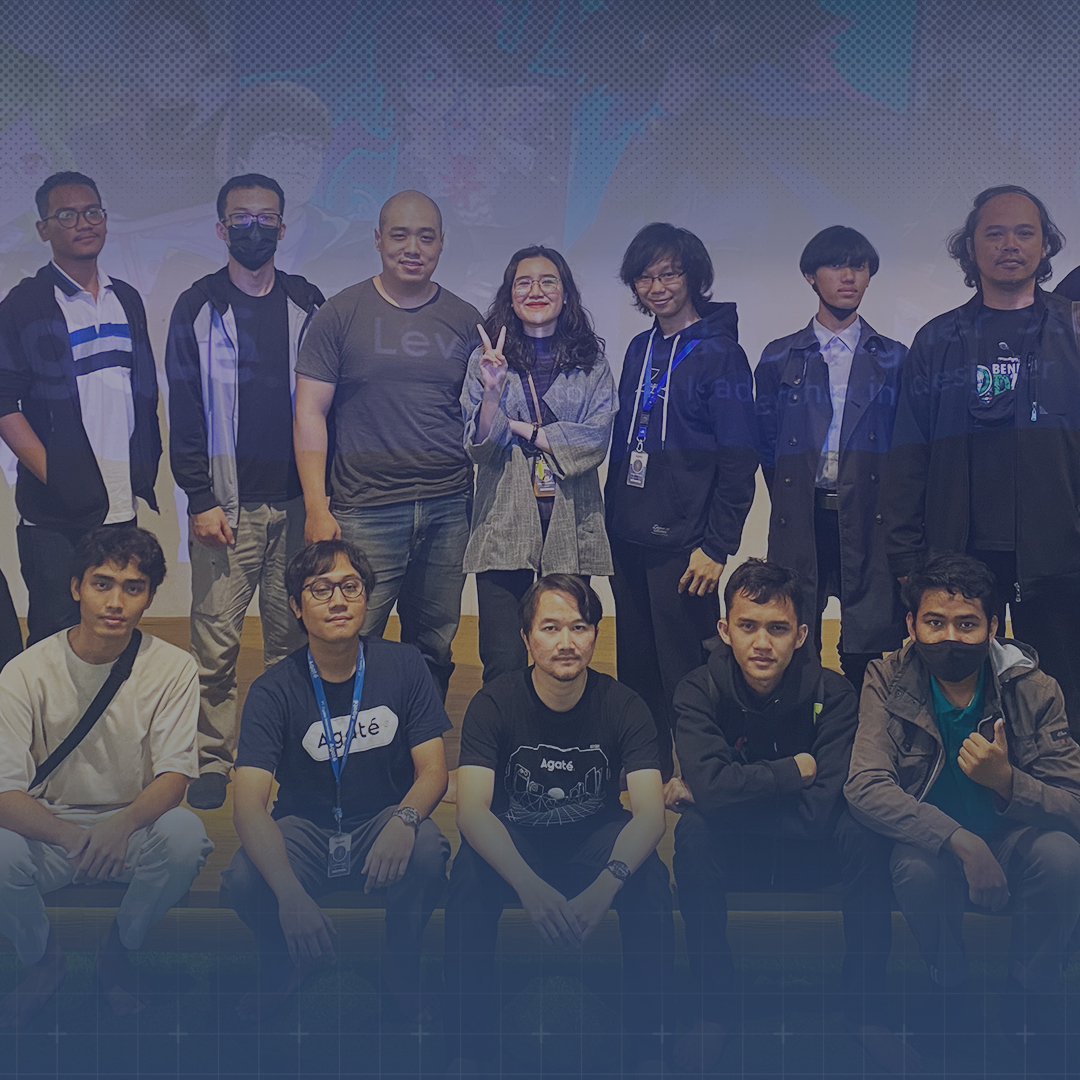
Are you an aspiring designer who wants to develop your leadership skills and level up your career? Worry not! On December 17th, 2022, our Design Director, Fandry Indrayadi, and our Associate Design Manager, Ignatius Tommy Eka Putra, provided some insightful tips at the Designer Story event. The event was held hybrid, so participants can join both offline and online. Let’s check it out! Fandry (center) and Tommy (right) are sharing their tips and experiences about leadership in the design industry. In the event, Tommy and Fandry shared about the two options available for designers who want to step up their careers to a higher level: SpecialistThey typically become experts in a particular field within the design domain. Generalist-managerial They typically take on a lead position of a design team for a particular project in the company. As a generalist-managerial, there are three career choices that you can take: Lead DesignerYou’ll be responsible to lead the team and ensure the quality of the project. As a lead designer, you’ll collaborate with stakeholders of the project to ensure the timeline and goal of the project are achieved while actively participating in the decision-making process. Design DirectorYou’ll be in charge to ensure the quality and development process of a large project is up to the company’s standards. If there are any issues during the project, a design director will be the problem solver. In a project, you’ll take the responsibility to ensure the design direction of a project and supervise the design progress with other lead designers. Studio Design Director You’ll ensure multiple projects’ quality and development process is up to the company’s standards. In the team, you’ll also work with lead designers and design directors from various projects to supervise, synchronize, and act as an advisor to the team. Tips from experts at Agate to help designers prepare themselves to become a leader: What are the roles and responsibilities of a Design Director and Design Manager? The main tasks of a Design Director are: Ensuring that all designers and the project’s progress are in line with the agreed goal and vision for a game. Having strategic thinking to find a long-lasting experience in the game based on user behavior. The main tasks of a Design Manager are: Helping to manage other designers. Acting as a bridge between the Design Director and other designers. The general differences between the two roles are: The Design Director focuses more on the direction of the design aspects of a project. The Design Manager focuses more on team or people management. Are there any changes when you transition from a designer to a lead designer? What are the differences in the problems and the skills that need to be developed? What a solo designer or designer in a team focuses on: Observing the environment and behaviors around. Particularly things or experiences that can be implemented into the game. Solving problems that exist in the game in order to provide the desired experience. Communicating and presenting ideas, concepts, and designs that have been created. Documenting processes and ideas obtained from oneself or other team members. As a lead or manager, you usually go directly to the field less often. The main tasks of a leader or manager are: Being a good listener who knows how to effectively communicate ideas, concepts, or feedback to other designers. Putting team members in the suitable position according to their abilities and knowledge. Being a decision maker in determining solutions for problems that arise in a project. Providing opportunities for other designers to learn from the problems or mistakes that arise. What do you wish you had known when you first became a lead designer? When becoming a solo designer, one usually focuses on their own thoughts and does not overthink about other things outside of the work being done. In comparison, a lead or manager has to understand the management of human resources and the direction of the project is made. If you’re looking to begin a career in leadership or management, some of the skills you should develop are: Ability to look at the work and situation of others (especially members of the team) Time management Ability to manage people What is the difference between spending your time when you were a solo designer and a lead designer? Are you still designing games/products? When comparing the time spent as a solo designer and lead designer, the most noticeable difference is the intensity of being able to jump in and help design the game. As a lead or manager, more time is spent on the strategic side to ensure the game’s direction and vision are still relevant. In addition, a lead or manager will also spend more time being the mediator in issues faced by their team members, which takes up more time in meetings. As a solo designer, more time can be spent designing the game or product. How to manage time and focus on becoming an effective leader? There are some tips to be able to manage time efficiently and also to make sure that there’s no timeline setback from a project. Establish time or schedule to work on your tasks, discuss with other people, and have meetings (use an online calendar to be focused and organized). Delegate some tasks to other people in the team. Make a priority scale for tasks. Usually, the main priority for a designer is the core gameplay, so focus on that first. Is there any advice for aspiring lead designers? Tips from Tommy: Learn to trust your team; this will allow the team to grow. Learn time management as early as possible; setting a work schedule is one way to do it. Learn how to manage people within the team. Try to be a good support system for the team. Tips from Fandry: A lead or manager should also have good design fundamentals. This means that a leader should continue to hone their skills in the: Observation Critical thinking Verbal and non-verbal communication
Agate’s Internship Program: Kickstart Your Career in the Game Industry

The internship program in Agate aims to give the opportunity to students, especially those in their final year of university or people who want to experience working in the game industry. With the program, Agate offers a first-hand experience where interns can learn, work, and discuss directly with professionals in the game industry. Not just that, the interns also have the opportunity to get the golden ticket that will prioritize them to be recruited in Agate in the future. Out of 28 interns who graduated in 2022, 9 are now working in Agate as a regular crew. What do you think about the internship program? “We’re very happy with this internship program in the Quality Assurance Department. With this program, the future generation of the game industry can gain working experience directly, and we can also learn many things from the interns from various backgrounds.” How was your internship experience in Agate? “The opportunity to join Agate was an excellent experience for me. From the Kampus Merdeka Program in 2021, I started my career as an Intern in the Talent Department here. I could learn many interesting things, from soft skills to hard skills, that I didn’t have before. I also feel that Agate is a comfortable workplace, especially for fresh graduates. That’s because Agate is a suitable place to learn and improve self-ability to build a career in the future. Now I have become a Talent Development Staff, and I am ready to grow to be an epic crew in the following years.” “Initially, I learned about game development with my friends in college. In the past, I made several games, but most weren’t finished; they were still prototypes. Then, I saw an internship opportunity at Agate and went for it. I learned a lot in Agate, especially about the culture here that suits me well. It’s about positivity, collaboration, level-up, and excellence. I used to be a person that’s afraid to make mistakes. However, in Agate, I met many good mentors, and they shared positive values and culture in Agate which made me learn new perspectives about many things. I feel lucky that I got to meet supportive mentors and teams that care for my development. It made me comfortable learning new things. Also, when I wanted to step up to be a lead or explore another role, many seniors supported me and gave me many recommendations about where to start if I want to go there. All in all, I learned and got so many new things, both technical and soft skills. I learned more about game development and also about self-improvement. It’s all thanks to my mentors that have been patient in teaching me during my internship.” The internship program is meant to give interns the opportunity to explore and develop their careers while also learning new skills. We aim to produce a new generation of game developers through this program. Are you ready to be one of them? Check out the vacancy list below! INTERNSHIP VACANCY LIST All DepartmentsTechTalentStudioProductionMarketing Sales & OperationDesignCorporateArt Internship Search Position Department Contract Type Talent Manager Art Department Art Contract Type : Internship Details Production Support Production Contract Type : Internship Details Digital Marketing Marketing Sales & Operation Contract Type : Internship Details Tech DevOps Tech Contract Type : Internship Details Load More
Talent Development Programs: How We Support Our Crews’ Growth in Agate

In Agate, we strive to be better at growing our crews to the next level. That’s why we support our crews’ growth by providing various Talent Development programs. Let’s take a look at our programs! Performance Management To ensure we give every crew the same treatment and chances, we uphold the system of meritocracy. Meritocracy is a system that assesses individuals based on their competency and cultural alignment. We conduct a periodic review to assess their soft skills, technical skills, and cultural alignment in the company. We aim to give crews fair rewards and feedback continuously for our crews. Leadership Review Not only for the crews, but we also conduct a review for all the leaders and managers in Agate. The reviewers consist of direct reports, peers, direct leaders, and crews from other departments working with them. Learning Materials Aligning with our core value to level up, we always strive to support our crews to improve their skills. We facilitate them by giving them access to learning materials requests across various platforms and formats. Career Path & Grade Up Session Here, crews have the right to always grow for their career path. We provide an opportunity for crews to get promoted. They can submit a grade-up request to their leaders and head departments. PDP (Personal Development Program) Agate’s leaders and mentors also get hands-on with our crews’ development. One example is when our crews need guidance or advice to track their development skills plan. Personal Development Program is a program that allows every crew to level up with guidance given by their leaders. Overall, the result of this program impacts our crews’ well-being, especially for fairness, growth, and reward. What do our leaders think about the Talent Development programs? All Talent Development programs are created from crews and for crews. We’re always open to listening to our crews’ needs in their career milestones. Our programs are created to fully support our crews’ growth and needs such as providing mentors for new crews to guide and help them. Also, we’re providing access to learning materials, so it can be easier for our crews to develop both their personal and professional skills. It’s nice to see ourselves growing along with others; I’m happy to be a part of the team that always supports others’ growth personally and professionally! The Talent Development programs help the lead to plan the development of the crew’s career potential in the future with measurable standards and expectations, as well as finding solutions for a crew whose performance can still be improved. Similarly, the leaders are graded with a 360-degree grading system to prevent subjectivity and ensure all crews, including leaders, always conform with Agate values.” Performance Management: For a company to thrive, we must ensure every crew carries their responsibility well. It’s important to acknowledge which crew performs excellently and which crews need to improve. That’s why an accurate performance management system is required. Leadership Review: The review also goes both ways for the leaders. Every crew has the right to give an evaluation to their leaders. From there, every crew can appreciate their leaders or help identify leaders that need help. This program is the starting point of the Leadership Development series in Agate. Learning Materials: Here, everyone has the same opportunity to learn. How quickly a person can develop in Agate will be primarily determined by how much effort the person puts in. We provide a variety of self-study materials according to the needs of the crew at Agate. Grade Up: Crews have the right to submit an evaluation for grade-up, so we can provide a reward that matches their abilities. In addition, if a crew is not qualified to level up, they will get clear guidance about what improvements they should make to level up. Personal Development Program: We also offer a Personal Development Program (PDP), which allows everyone to grow to be their best version. PDP is created to encourage crews to continuously improve with a more concrete target they can achieve within one to three months. Grade Up: We provide the opportunity for crews to grade up when they think they’re ready for more responsibility. This aligns with the Meritocracy system and Level Up spirit. With a Grade-Up session, the crew can request promotion without feeling ‘pushy or ambitious.’ It is a very transparent system where people are promoted based on merit. Career Path: We give crews choices to determine their career path and the skills needed to reach their career goals. This clarifies the learning process and helps the crew stay motivated to learn new skills. Leadership Review: It doesn’t matter how great the company is; it’s the leaders within that matter. If there’s a bad leader, it impacts the crews under them negatively. The system of meritocracy here doesn’t only apply to crews but also all leaders. Leadership Review helps the company to identify leaders that need improvements to be better. Performance Management: Meritocracy is a good system for fast learners and competent people. Performance Management allows the crew to showcase their capability and growth. This will help the department to identify and promote rising stars’ talent. Personal Development Program: We appreciate people who keep learning new things and push them to be more capable. The Personal Development Program allows them to showcase their growth, so we can give them the opportunity to match their aspirations. Learning Materials: Some learning materials are not accessible because they’re locked behind a paywall. Also, the paid version is sometimes far better than the free version; by providing free access to those materials, we help our crews’ learning speed significantly. All in all, our crews’ growth is our priority. With these programs, we aim to create a comfortable workplace for our crew to level up and unlock their full potential. If you’re interested in joining our team, check out the vacancy list below! VACANCY ON TALENT DEPARTMENT All DepartmentsTechTalentStudioProductionMarketing Sales & OperationDesignCorporateArt All Contract TypesRegular CrewInternship Search Position Department Contract Type Talent Manager
Artist’s Weapon: Skills and Tools To Master
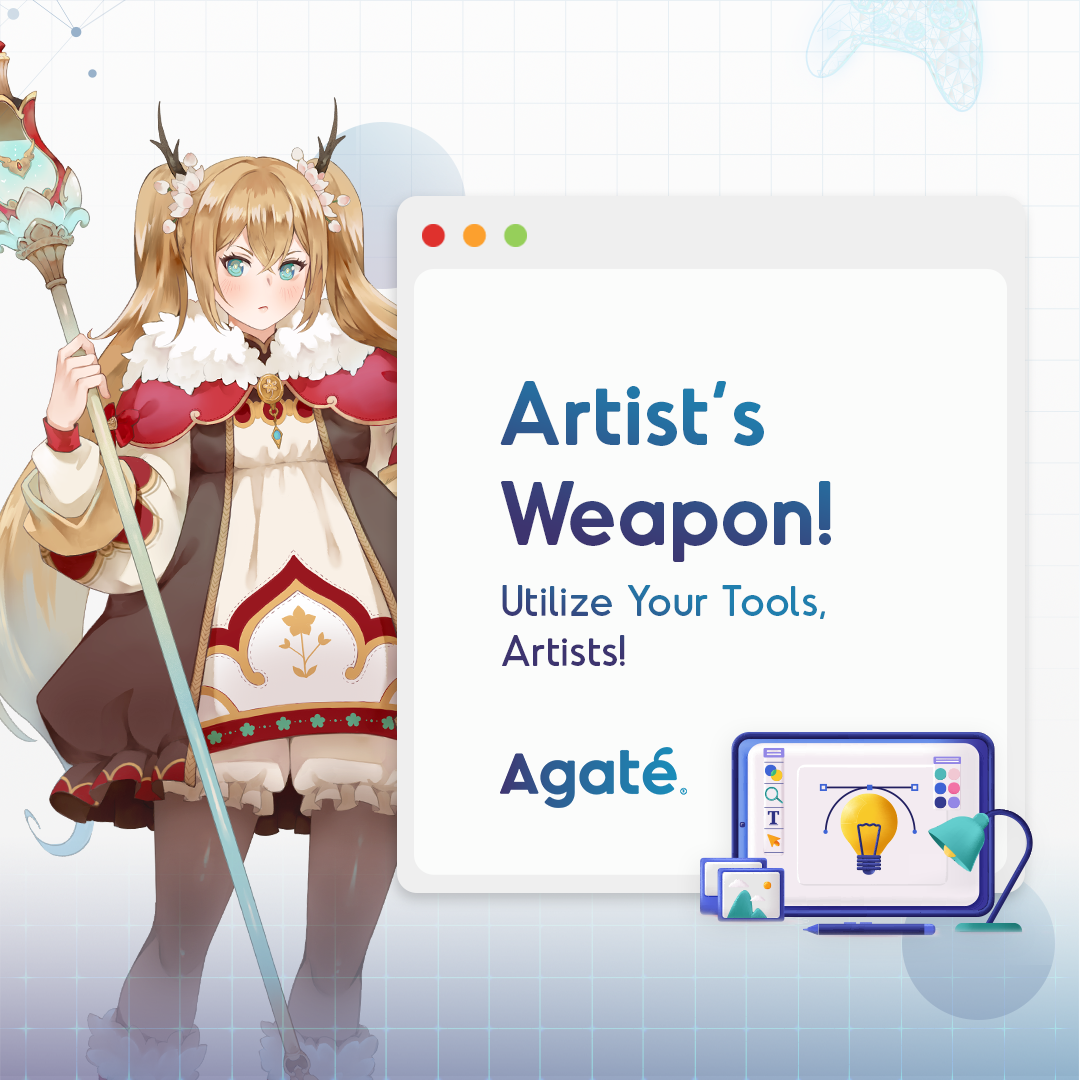
The gaming industry, a continually evolving creative field, provides many opportunities for artists to follow their passion and build successful careers. Since the gaming industry is constantly expanding, artists need to keep up with the rapidly evolving skills and tools used in the industry. What Skill Does An Artist Needs? An artist is responsible for a visual aesthetic that includes color, composition, value, shape, textures, anatomy, and perspective. With the variety of elements that Artists need to create, what are the essential skills required for an Artist? LeadershipAn artist is responsible for completing a project, which may be multiple, one at a time, with numerous people in a team. Leadership skills must bring out the finest qualities in team members and inspire them to collaborate to accomplish a common goal. CommunicationAs communication goes both ways, an artist must be able to speak their mind and listen. Artists must translate their vision into words and communicate it, not just visuals. TeamworkTeamwork skills are needed because, in game development, an artist will work closely with the team to achieve the goals set at the beginning. Problem-solvingArtists will encounter various obstacles during their work. It will only worsen if the issue is not handled by the deadline. That’s why an artist needs to be a problem solver. CreativityParticularly in game development, an artist must be a creative individual capable of producing innovative ideas for their artwork. Time managementArtists need to use time wisely and productively. They also need to manage their time to focus and control the time to complete their tasks. Good time management can increase work productivity. Attention to detailArtists must be able to carry out and finish a task while demonstrating thoughtful thought for all aspects concerned, no matter how minor. This entails efficiently managing time and resources while monitoring and verifying work or information. What Tools Do Artists Utilize? Raster Illustration (Adobe Photoshop)Rasterization is a technique with a pixel-by-pixel system. It allows the creation of complex shapes and color blendings, such as creating concept art or 3D texturing. (Vector Illustration) Adobe IllustratorVector is an illustration technique with a data calculation system that is unaffected by the number of pixels, such as creating UI assets. UI/UX (Figma and Adobe XD)These tools are used to design User Interfaces in the game, such as buttons, pages, head-up displays, and the outcome when it is run by the player/user. 3D Modelling (Zbrush and Blender)3D Modelling involves creating three-dimensional points or vertices by vertex objects in 3D space. Zbrush and Blender are famous for making 3D objects because they are easy to use and have a broad scope for making games and cinematic assets. Rigging (Blender)Rigging is like giving a “bone” to an object/character so it is ready to transform as animation. 3D Animation (Blender, Rokoko Studio)Animation is the phase where the rigged object is moved and posed keyframe by keyframe into a sequence that matches the desired movement in the game. Such as idle, walk, run, jump, attack, etc. Texturing (Blender, Adobe Photoshop, Substance Painter, Substance Designer Texturing)Texturing gives color to 3D objects; the basic principle is similar to raster illustrations. Game Engine (Unity Engine, Unreal Engine)The final phase is to transfer the finished asset into the game engine to develop the game itself. Again, a specialist game artist must master the game engine’s features and tools to set every visual asset properly. If you think you can utilize these tools to your advantage and more, head down below and show us what you’ve got! Vacancy ON ART DEPARTMENT Position Department Division Contract Type 3D Artist Art Gamification Contract Type : Temporary Details 2D Artist Art Gamification Contract Type : Temporary Details Technical Artist Art Art Service Contract Type : Temporary Details Load More
Agate Art Club: Smaugust
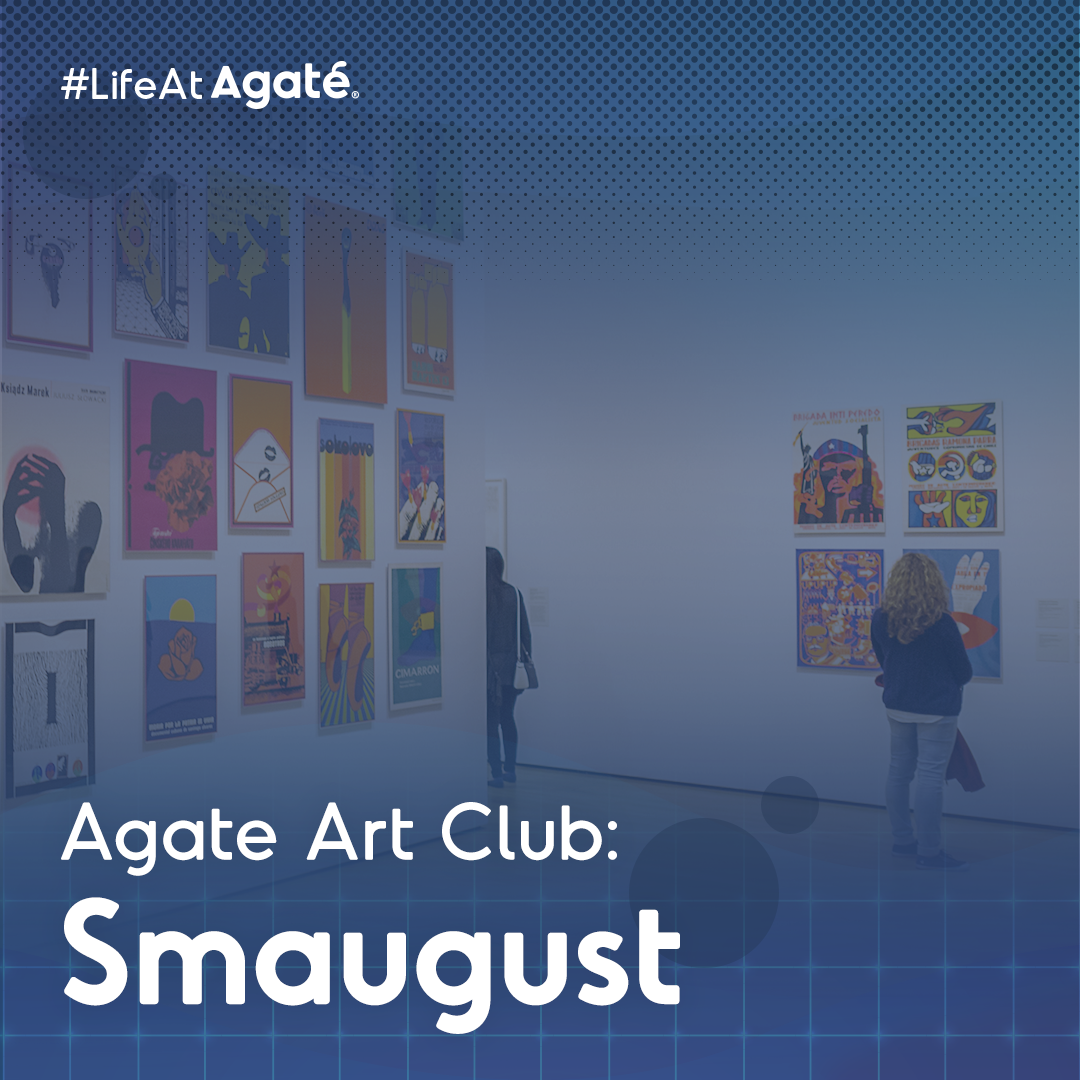
In Agate, we provide our crews with a way to express their ideas. Instead of just meddling with their work, we give them space to express their creativity through various activities, media, and clubs. Just like a game that is supposed to be fun and exciting, we want to create the same atmosphere working behind the desk as game developers. One of the activities is Agate Art Club. Agate Art Department creates appealing activities for game artists to fine-tune their skills. One of the activities is a monthly event where game artists, or any interested crew, draw a specific creature or thing. Last month’s Agate Art Club theme is Smaugust, inspired by Smaug, the dragon from The Lord of the Rings series. Here are the arts they submitted. Our special thanks to our artists: Abiyyu Prishdian Vivekananda | Rookie Game Artist Ar Cahyadi Indra | Head of Art Department Kelvin Adriel Setiawan | Rookie Game Artist Nelson Setiadi | UI/UX Artist William Joelian | Associate Lead Artist And also to our crew from another department: Payoma Kusuma | Game Producer Which Smaugust is your favorite? or do you wish to join Agate Art Club? We currently open roles for artists. Take a look at our opening here: Artist roles. Vacancy on Art Departement Position Department Contract Type 3D Environment Artist Art Contract Type : Full-time Details Art Director Art Contract Type : Full-time Details [Mythic Protocol] Senior 3D Character Artist Art Contract Type : Full-time Details [Mythic Protocol] Creature 3D Artist Art Contract Type : Full-time Details Load More
Recruitment Tips and Tricks: Career Types in the Game Industry
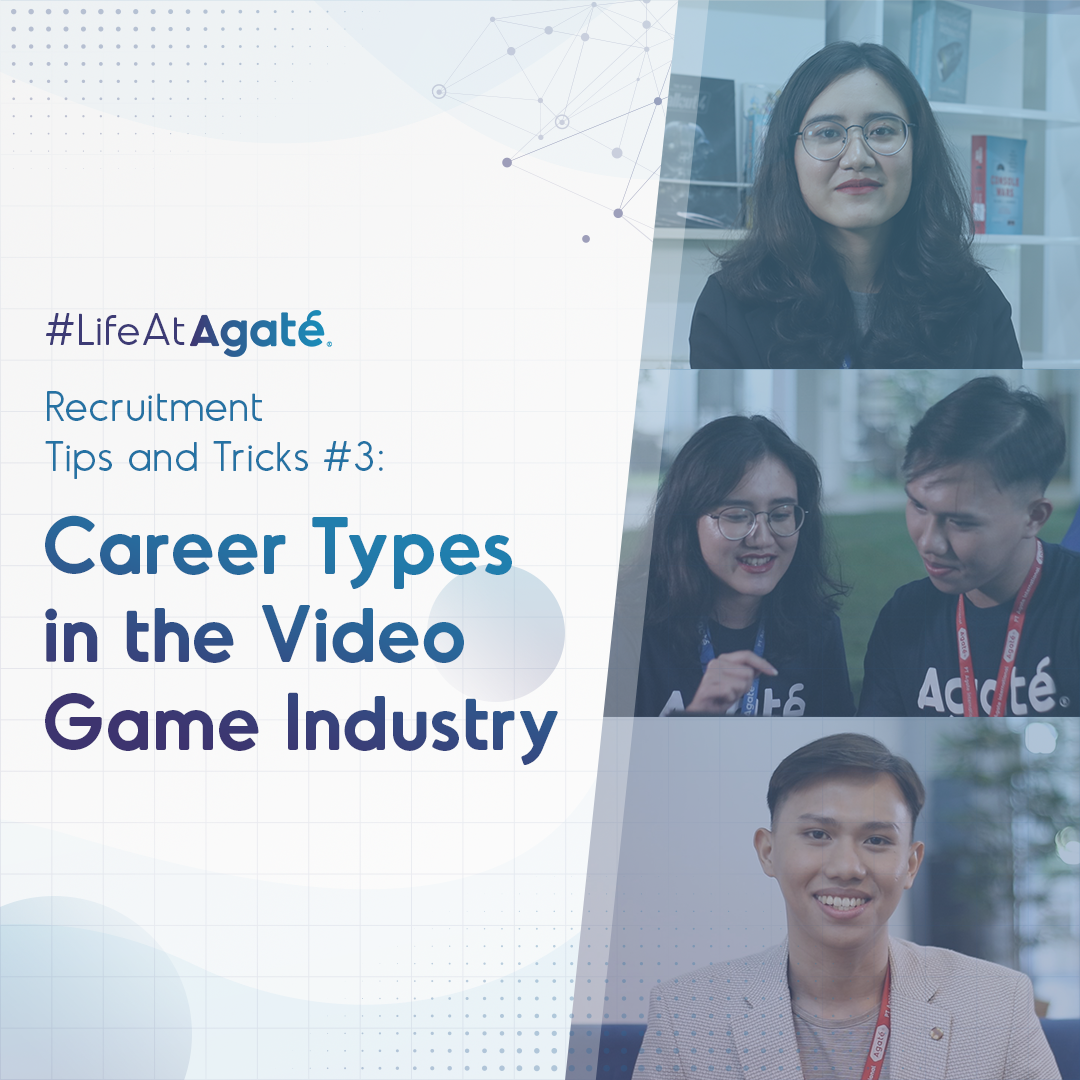
The rapid growth of the game industry in the past years proves that gaming is one of the promising industries in the future. Undoubtedly, many professions have emerged in the game industry today. Thus, making a career in the gaming industry sounds quite tempting. Are you curious about the career types in the game industry? As Indonesia’s leading game company, Agate has several types and categories of career types that our crews undertake. These several career types aim to meet the demand for a diverse workforce in the video game industry. Our Recruiter, Hanifah Oktarina Arief, and our HR Generalist Kemas Rahmat Mubarrak will give you other recruitment tips and tricks, specifically about career types in Agate. Hopefully, these recruitment tips and tricks will provide you with an understanding of the path you want to pursue. Are you ready to join the game industry? Agate is hiring! Take a look at our open job roles here: Agate is hiring!
Career Transition From Project Manager To Game Producer
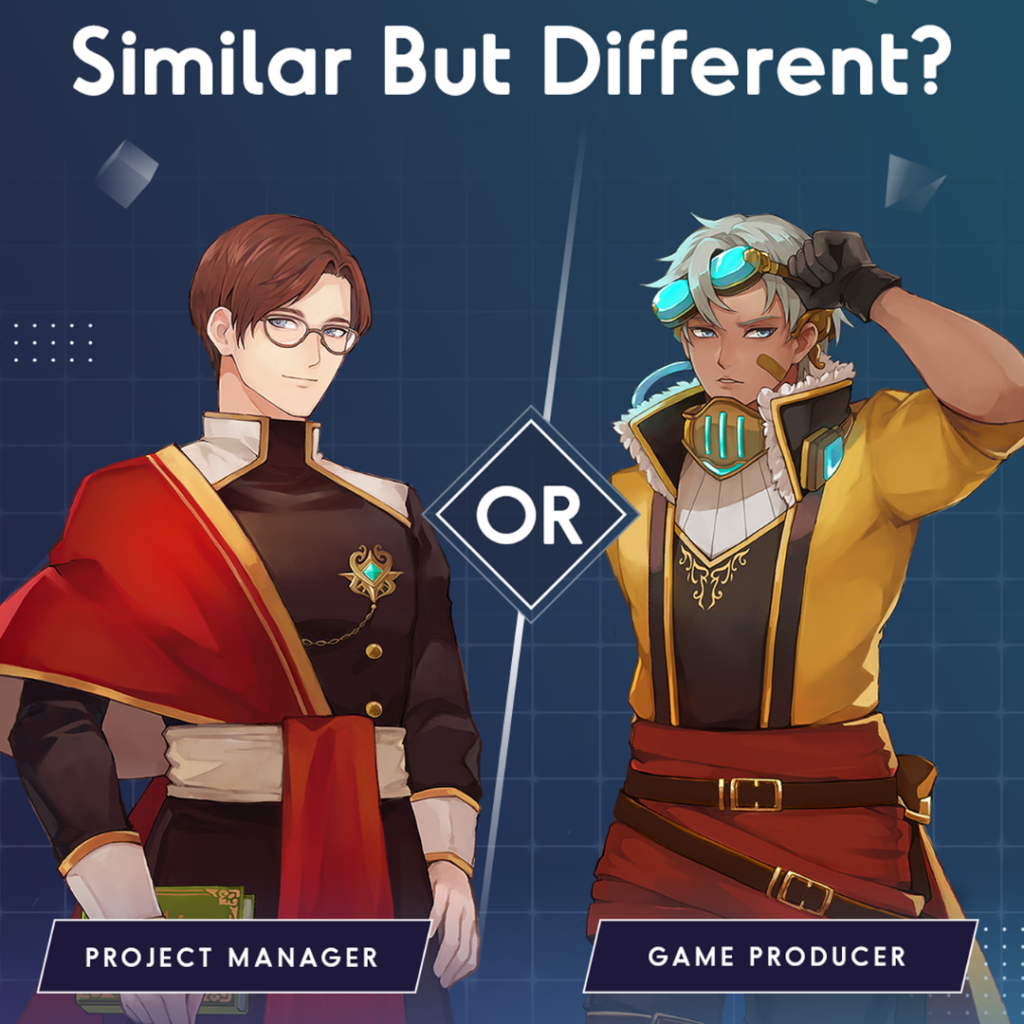
If you have a career transition from Project Manager to Game Producer, what do you have in mind? While working as a Producer might confuse you in many related fields from movies, music, television, and even games, there’s something you might also associate with this role in the technology field. You also might be familiar with the other “Jack of all trades” in the area. Can you guess? Yes, it’s the Project Manager. Between Project Manager and Game Producer, what do they have in common? A Project Manager and a Game Producer share the same goal. They both work to ensure the project (whether it’s an app or a game) is delivered as scheduled, on budget, and within the expected scope. We call this a project management triangle. So, we can say that both have similar duties in team building, breakdown tasks, and distributing each assignment to the team member. They also acquire people, budgeting, time management, and communication skills. Then, what is the difference? Both roles are different regarding the additional skills dan knowledge. Game Producers are more specified in the creative industry, which involves 2D-3D art and music component production. In comparison, Project Managers are more on the general side of expertise, such as focusing on accountability, progress monitoring, and resource management. More specifically, a Game Producer needs knowledge and hands-on experience in game development, including live ops. In addition, compared to the Project Manager’s ability to fulfill its app features and usability, Game Producer Producers must succeed in building a core loop in a game that is fun to play. If you are a Project Manager, have you ever wondered about transitioning to Game Producer? Opportunities for a Project Manager to be a Game Producer are wide open. If you are interested in mastering the game development process, then it’s your chance. You don’t need to specialize in a particular aspect as a Game Producer. Instead, you can learn much expertise such as illustration, UI assets, game design, etc. The working culture will be the most exciting if you have a passion for the creative industry (we’re talking about games!). As a Game Producer that wants to deliver joy to its users, we work in a fun working environment to maintain creative culture throughout the company. Game Producers also work to test in-game mechanics and often find unexpected things that are unique and funny. Working to explore a game that you develop is a pleasure in itself. As Project Manager and Game Producer have overlapping similarities, both role has the same skills that are required for their job, which is: Progress Monitoring Resource Management Accountability Detail Oriented Team Building Task Breakdown Task Distribution Timeline Projection Budgeting Project Delivery Even though they share a certain amount of differences, in Agate, Project Managers and Game Producers are both considered to be Game Producers in their entirety. If you are interested to have a career transition from Project Manager to a Game Producer in Agate, head to Game Producer role. Vacancy On Production Departement Position Department Division Contract Type Public Relations Marketing, Sales and Operations Support Contract Type : Temporary Details Lead 3D Artist Art Art Service Contract Type : Temporary Details Load More
Go Deeper As a Game Producer: Skills and Tools You Needed
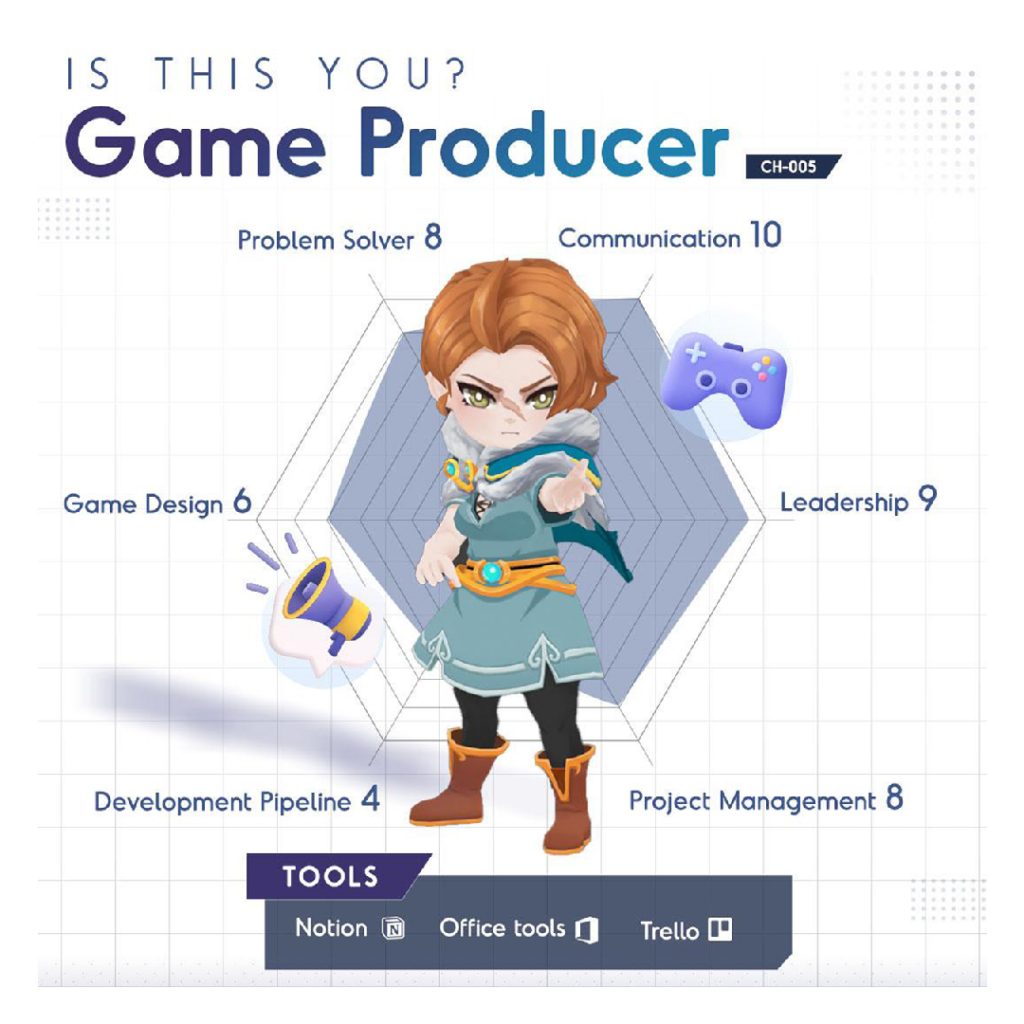
In the past few articles (see our Recruitment Tips: Excel Your Game Producer Application or Being a Game Producer: Perks and Challenges), we’ve talked about Game Producers and the importance of this role. To ensure that our games are released on time, we need someone to manage the team and keep track of the development process—and that’s where Game Producers came in! Game Producers, the all-seeing eye of development, are responsible for overseeing everything in the course of action. They manage production schedules and plans for the team and ensure those are followed and adhered to. In addition, producers let everyone on the team know about the upcoming steps and goals they’re trying to reach. From the development and production stages, Game Producers must also guide their teams to maintain a shared design, artistic, and technical vision. Game Producers are strategic thinkers. With a deep understanding of the process, they can devise long-term and backup plans if something doesn’t work out—making sure no team loses direction. With their pragmatic and tactical leadership, they manage the team to be successfully released the games for gamers all over the world. From knowing the what, when, and who and coming up with solutions, Game Producers made it happen. What are essential skills for a Game Producer? Leadership Skill A Game Producer needs to act as a team player that will lead a team of talented programmers, artists, designers, and QA to reach a common goal. So, leadership skill is the essential skill a game producer should have. Project Management Skill To be involved in game development from end to end, a Game Producer could keep track of everything in the project: the schedules, the stakeholders, the objectives, and so on. A Game Producer should be familiar with project management methods and tools. Communication Skill Being an expert communicator is a must skill that Game Producers should have. A Game Producer must be great at listening, giving feedback, and preventing ambiguity within the team’s scope and external stakeholders. Problem Solving Skill Things never go 100% as planned. Therefore, problem-solving plays a massive part in the game producer’s role. A Game Producer must be able to identify, plan, strategize, and develop creative and effective solutions for every situation encountered. Game Design, Art, and Programming Knowledge A game Producer is not practically involved in the game design process from scratch or the game programming and artwork. Even so, a Game Producer needs to be knowledgeable about the game design and development pipeline. So with a little bit of understanding of everything, Game Producers need to understand the game design and development pipeline to support and direct their team. What Tools Do Game Producers Utilize? Game Producers need tools to help them plan and monitor their team activities to support their day-to-day work. They use three main tools: Notion, Office Tools, and Trello. Most routine management and database tasks will be more swiftly and efficiently with the help of these tools. In addition, you can use different features on the app simultaneously to support each other. If you think you have what it takes, head up to our vacant Game Producers role and shoot your shot! Vacancy On Production Departement Position Department Division Contract Type Public Relations Marketing, Sales and Operations Support Contract Type : Temporary Details Lead 3D Artist Art Art Service Contract Type : Temporary Details Load More
Recruitment Tips: Excel Your Game Producer Application
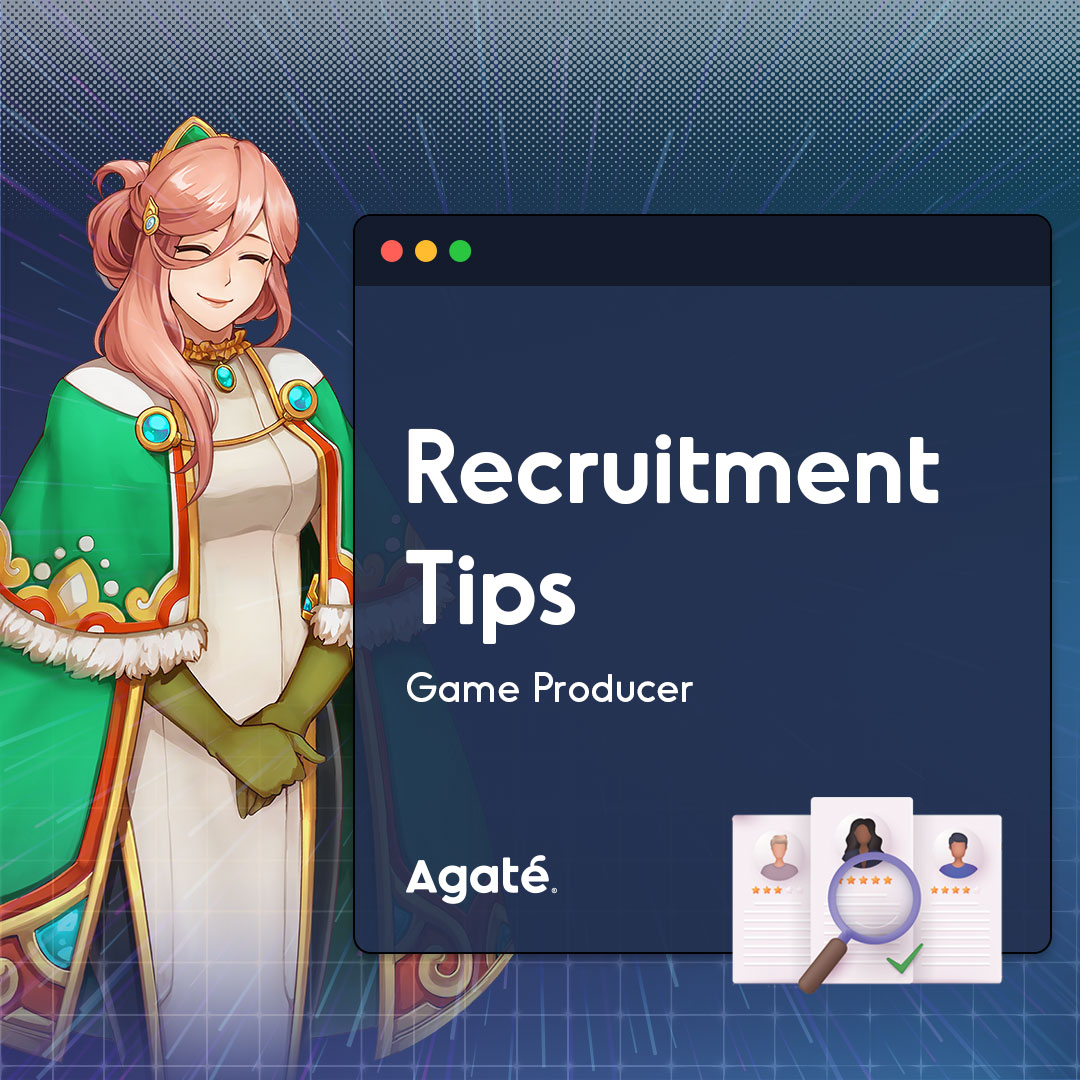
Is this your first time applying as a Game Producer? Or are you already a Game Producer ready to step up your game? Here’s an insider leak on recruitment tips for how to excel in your application as a Game Producer in Indonesia’s leading game company – in a simple brief! First and foremost, you should know how the recruitment process works in a game company, especially in Agate. Our recruitment consists of several steps, including portfolio screening, technical tests, and interviews. As our candidate for Game Producer, you’ll need to go through all of these stages. Game Producers are the ones who make sure development is on track and on time. Therefore, they need a wide range of technical and managerial knowledge—and they also need to know how to showcase that knowledge to a recruiter and users. In this article, we highlight several things to do when applying as a Game Producer: Portfolio A portfolio is the first thing you might not realize has a significant value as a game producer. It would help if you built an impressive portfolio whether you are a starter, associate, or senior-level producer. A portfolio can help you to explain your previous project, such as how long you led the project and how big you handled the team. In addition, you can describe what scope you are doing in the past project. Other things you can highlight in your portfolio are the problem you encountered in your previous projects and how you overcame the challenges. You can also share your last postmortem project (if any), so you can give a short preview of the result of your work in previous projects. Technical Test The technical test process is one of the steps you must go through as a part of the recruitment process. While a portfolio is needed as a part of the screening process, this stage aims to assess your mastery of specific skills needed as a Game Producer. In addition, in this stage, you must show how extensive your knowledge is because game producers must understand the end-to-end game development process. The technical test you need to work on might differ on the expertise required for the company. But one thing is for sure, recruiters and users value highly how broad your knowledge is. So show your knowledge and skills in the technical test given. In addition, during the technical test, you need to provide a strong impression and reason why you are the right person to be a game producer. Interview The interview stage is the most crucial stage you need to excel in the recruitment process. You can look at our previous Recruitment Tips and Tricks: Do’s and Don’ts in An Interview to give you a simple guide to stand out in your interview. But how do you outshine other candidates as a game producer in the interview process? In game producer interview, you’ll be asked about your knowledge, skill, and expertise in game development. You also need to highlight your experience in a field that might be related, such as project management and managerial experience. Another thing our user addresses in the interview is that a game producer needs to be straightforward about what they do and don’t understand game development. We value producers’ honesty, even when you don’t know a certain aspect of game development. We’re hiring! Are you ready to follow our recruitment tips for your game producer application? Head to Game Producer Role to start your application process.

